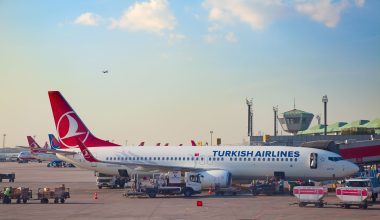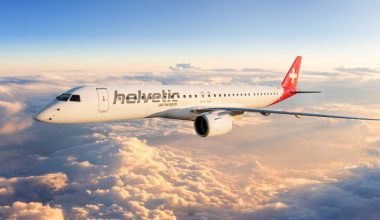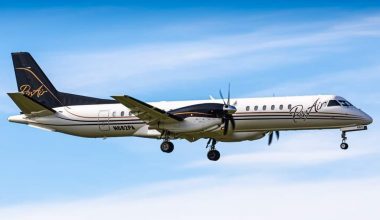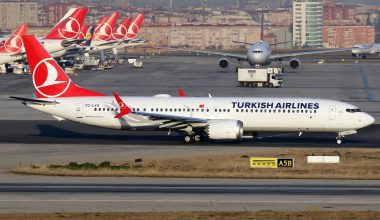Why did the Concorde stop flying? Nearly two decades have passed since the legendary supersonic Concorde jet made its last commercial passenger flight. Flying at twice the speed of sound, the supersonic passenger airliner exemplified the pinnacle of aviation technology. Concorde is an incredible feat of Anglo-French aerospace engineering that propelled aviation innovation to a new level. This extraordinary and awe-inspiring aircraft led everyone to believe that the future of commercial aviation was supersonic. But, the era of supersonic passenger flight ended when several factors escalated the retirement of Concorde in 2003.

Concorde was a Franco-British supersonic airliner that first zoomed off the airfields in Paris and London in the late 1960s. Its slender body was easily noticeable with its delta wing and dropping nose. It was fitted with four Rolls-Royce jet engines that produced 38,000 pounds of thrust. The sleek aircraft could fly at the edge of space- a staggering altitude of 60,000 feet and at speeds faster than a rifle bullet. It performed silky-smooth transatlantic junkets (New York-Paris) in an impressive 3.5 hours at 1350 miles per hour.
The legendary Concorde had ground-breaking features and a disruptive set of capabilities that pointed towards an ever faster and more sophisticated future. But after 27 years of commercial operations, the aircraft has become a part of history. In this article, we’ll explore the factors that resulted in the grounding of the supersonic Concorde.
1. Sky-high operating expenses
The magnificent supersonic Concorde jet was extremely costly to fly for operators. The operational and maintenance costs of the delta-winged were as stratospheric as its cruising altitude, which impeded flight availability. The operating cost of Concorde per block hour in the early 1970s is estimated to be $3800.
The quad engines powering Concorde were too fuel-hungry and burned around a ton of fuel per seat. A regular Concorde flight burned 6,771 gallons of fuel, twice that of the wide-body Boeing 747.
According to data from Concorde SST, the jet brought British Airways an annual operating bill of a whopping $1 billion. Its then-unit cost of $33.8 million is equivalent to 168 million dollars in 2021.

As reported by FlightGlobal in 2003, the new cockpit security doors set back approximately $30000 for each Concorde operator. The average subsonic Boeing jet would cost operators 12 times less than the supersonic Concorde at $25000. Furthermore, Concorde needed to undergo 22 hours of maintenance for every hour spent in the air. This meant it clocked in more hours on the ground than in the air. On the other hand, the 400-ton Leviathan Boeing 747, carrying four times more passengers, required 8 hours of maintenance.
Also Read: Boom Supersonic jet will require just 4 hrs to reach London from Dubai
In a nutshell, Concorde wasn’t financially viable for operators. While it did earn a certain million profit during its peak for operators, it wasn’t suitable for the long run. No matter how advanced the aircraft is, it won’t survive in the distant future if it doesn’t bring in profit for airlines.
2. Stratospherically high airfares
The exorbitant operating cost of Concorde meant expensive ticket fares for part of the passengers. The sleek Concorde jet was off-limits to average flyers. It was a machine built for business moguls and superstars alike.
Concorde was reserved for a privileged few and featured starkly designed cabins that gave way to luxury seats. The supersonic passenger jetliner was a new standard setter for luxury flights and a pinnacle of modern opulence.
The ticket price for a round-trip transatlantic Concorde flight was around 8000 pounds. Passengers flying from New York to London and back had to pay $7,995 in 1997. Pitched 10-15% above the subsonic First Class, the Concorde airfare cost 30 times more than the cheapest scheduled flight on that route. The fare difference was accepted as a jet-lagless transatlantic crossing tradeoff and a price for luxury at 60,000 feet altitude.

While the Concorde was a preferred mode of transport for world leaders and the ultra-rich, it was beyond the reach of the general public. The Delta-winged Concorde was a province of the mega-rich with stratospherically high fares that were restrictively high for most passengers. When air demand plunged after the 9/11 attacks, ticket sales dropped dramatically, hampering Concorde’s revenue. The general turndown in passenger air travel combined with the inefficiencies of operating Concorde led to decommissioning of the aircraft. Hence, ‘Why did the Concorde stop flying’ has to do with the operating economics of the aircraft.
3. Noise
Another underlying issue that contributed to Concorde’s downfall is the sonic boom’s nuisance. While the tailless jet could supercruise at Mach 2, it pushed a 3D bow-wave of air that could be heard on the ground. It sent a shockwave into the air, which wouldn’t dissipate, and caused a noise like a thunderclap. At speeds faster than a rifle bullet, the Concorde produced a shockwave strong enough to shatter glass when flying over cities. The enormous noise produced by the supersonic jet caused headaches and annoyance for people.
Due to several noise complaints, the government allowed Concorde to only go supersonic over the ocean. The plane couldn’t cruise up to Mach 2 speed unless it was crossing water. This limited the Concorde’s speed capability in densely populated areas, and no regular destinations were served.
4. The high-profile crash of Air France Flight 4590
One of the prime reasons why the Concorde stopped flying is the high-profile, horrific crash of Air France Flight 4590. On July 25, 2000, a Concorde flying from Paris Charles de Gaulle to New York JFK caught in-flight fire and crashed in Gonesse. The Air France supersonic jet was performing an international charter flight and had barely made it off the runway when it crashed.
It ran over a titanium alloy strip from Paris Charles de Gaulle during its takeoff run. The debris strike caused a plane’s tire to explode and disintegrate, and its fragments hit the underside of the wing. The parts of the landing gear were damaged, leading to the integral fuel tank rupturing. Leaking fuel gushing from the bottom of wings ignited and caused a loss of thrust in left-hand side engines.
Also Read: On the supersonic pathway: the ongoing development of Boom Overture
The plane engulfed in fire crashed into a hotel in nearby Gonesse. The plane fell in flames just two minutes after takeoff, and its inferno spared nobody onboard. The accident claimed the lives of 100 passengers, four crew and four other people in the hotel.
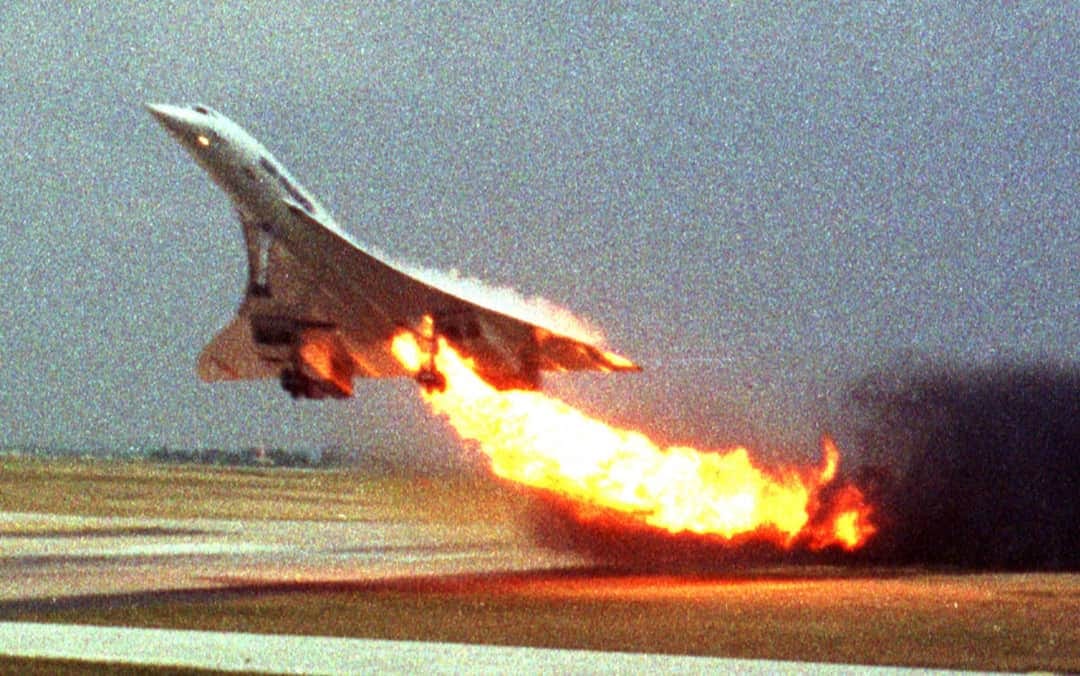
The tragic crash of Air France Flight 4590 left an irremovable stain on Concorde’s stellar safety record. It was the first fatal crash of the Concorde’s entire career yet marked the beginning of an end of the type.
The deadly crash of 2000 became the death knell of Concorde. It accelerated the end of all supersonic passenger jet operations. The Concorde fleet was grounded a few days after the crash and returned to service on November 7, 2001. Following the investigation, there were numerous modifications to the airframe, such as improved electronic controls, Kevlar line fuel tanks, etc. The 17 million pound-safety improvement program couldn’t save Concorde from its eventual fate.
Although the immediate shock of the 4590 Concorde crash subsided, the aftertaste dissipated slowly. The accident eclipsed all other Concorde issues and eventually sealed the jet’s destiny in aviation history.
Why did Concorde stop flying for Air France?
The Concorde was a money-losing venture for the French national carrier even before the disaster of July 2000. The supersonic jet operation didn’t fare well for Air France, which continued to rack up losses. Unlike British Airways, the French flag carrier couldn’t profit because its Concorde couldn’t go supersonic over land. The government regulations required AF’s Concorde to fly at conventional speeds over landlocked Paris. The subsonic speed meant more time in the air and more fuel burn.

After a deadly crash and consequent fleet grounding, Air France resumed Concorde operations on November 7, 2001. But, the troubles didn’t end, and technical and financial issues continued. Citing a slump in passenger numbers following the terror attacks of September 11 and high maintenance costs, AF retired the type in May 2003.
Why did Concorde stop flying for British Airways?
Until the crash of Air France 4590 in Paris, the Concorde brought millions of pounds to British Airways. The London-based carrier claimed to make a net average profit of about 30 Million pounds yearly through Concorde operations. The demand for the New York-London route was high since both cities were thriving financial hubs.
After the crash, even BA’s Concorde fleet underwent grounding. The flight demand wasn’t the same when the aircraft went to the skies again. The 9/11 attacks inflicted a devastating toll on air travel demand as people developed a stronger fear of flying.
The low ticket sales caused by the attack and AF 4590 crash and elevating maintenance costs contributed to the retirement of the BA Concorde. (1)
The supersonic jet that once captured the imaginations of millions with its test flight continues to grip our imagination even after its demise.

